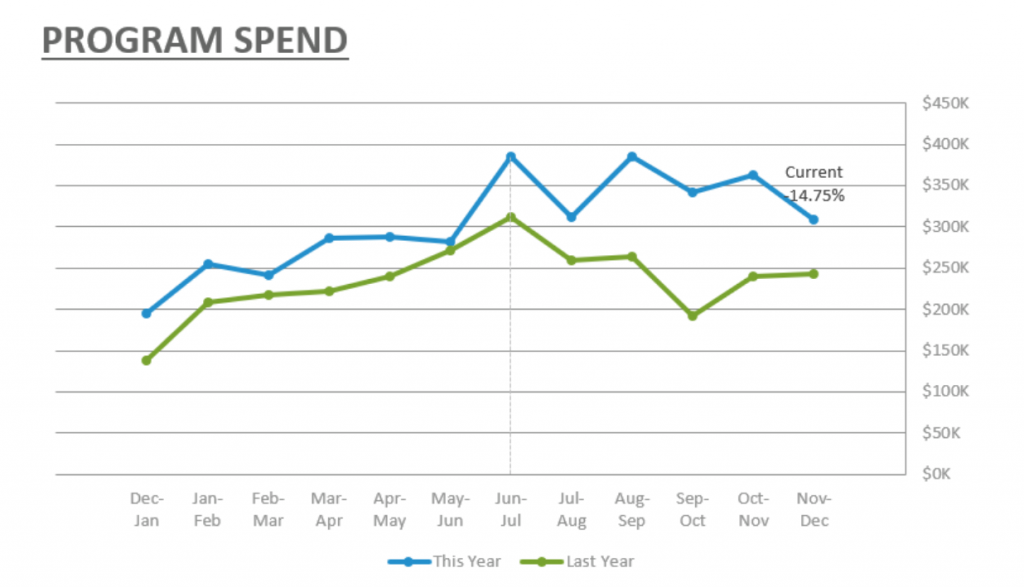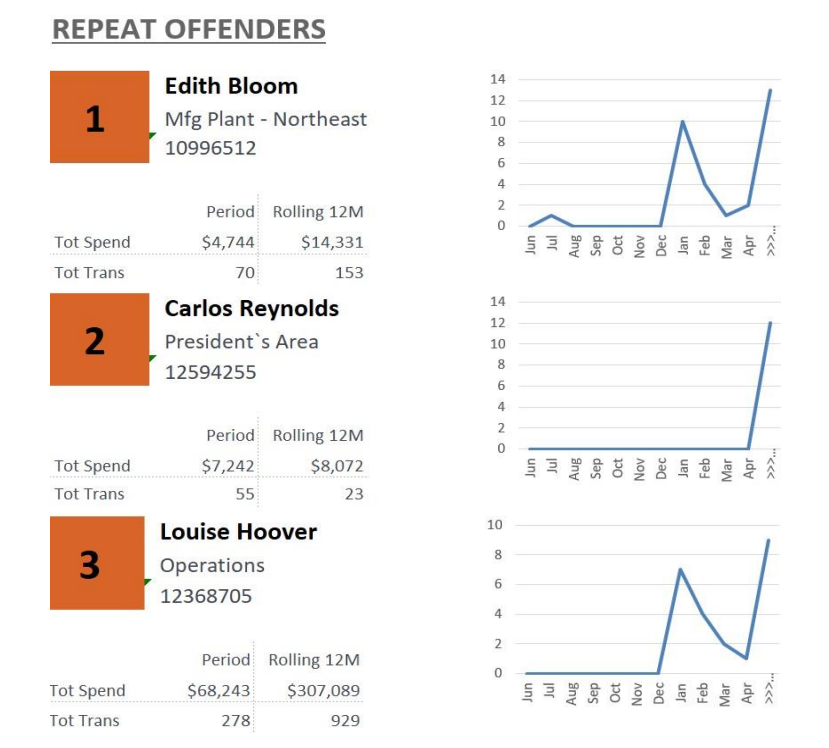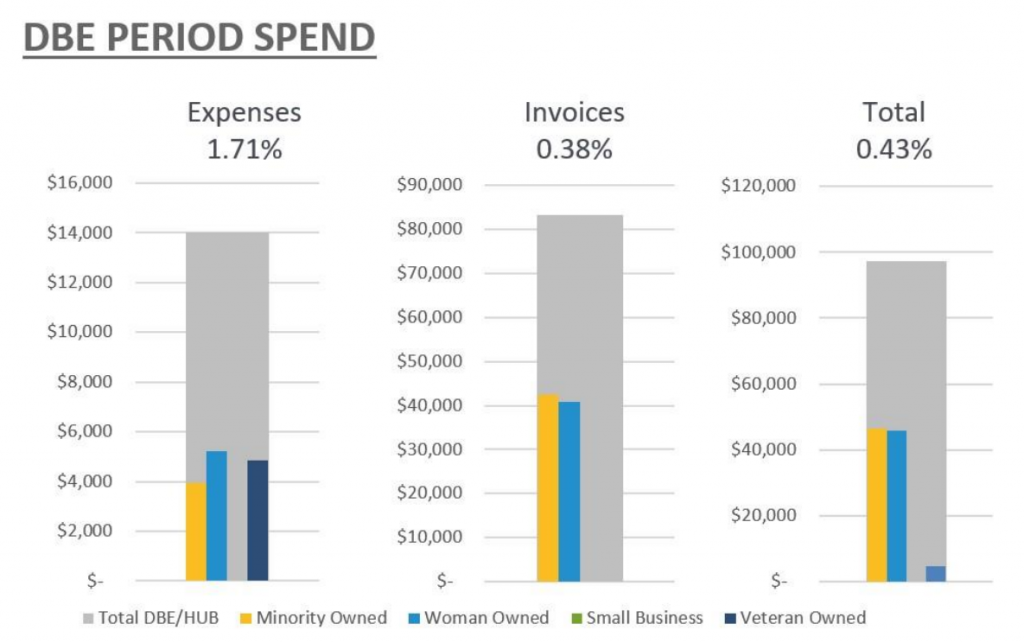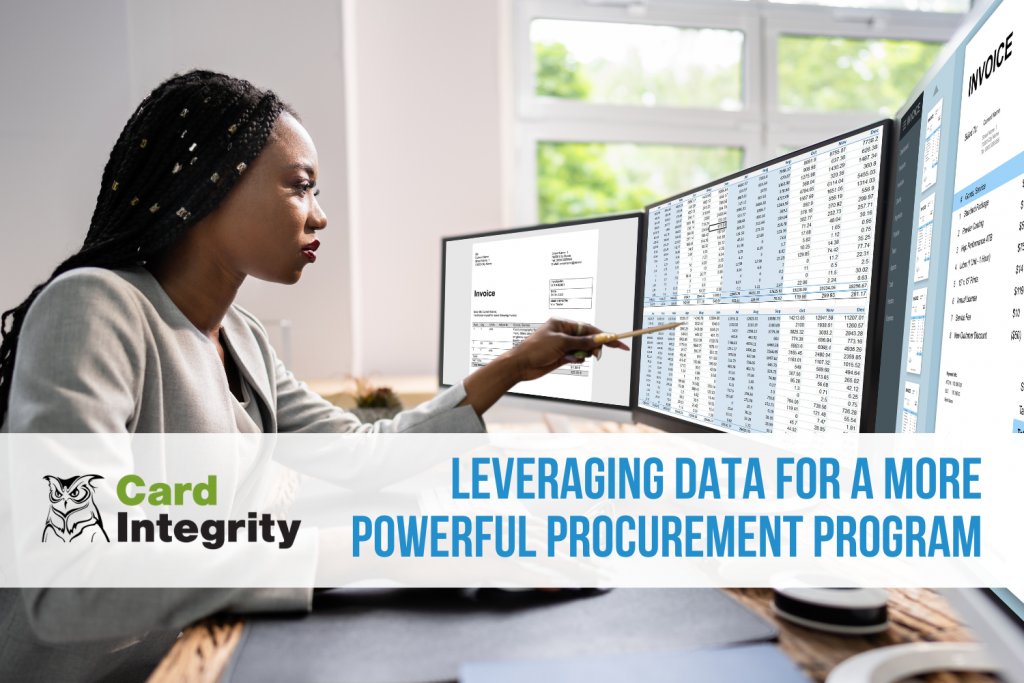How is your card program using data? Many procurement managers know that data in their procurement programs could be leveraged more efficiently, but feel unsure on how to start. In addition, many departments throughout a single organization want to know information that comes from procurement. Requests for specific numbers are also likely to come from outside of just purchasing, finance, and internal audit. Leveraging data in a way that makes everyone happy can be time-consuming. Fortunately, there are ways of combating this. First, let’s take a look at how data can be compiled and visualized in a way that is useful for different stakeholders.
Different People Want Different Information
Different roles have different questions. For example, P-Card admins may ask:
- Is the program healthy?
- What are the potential liabilities?
- What is changing?
- How can I grow the program?
The central review team may ask questions like:
- Which transactions are risky?
- What are the risky patterns?
The CFO could ask:
- How is our rebate tracking?
- Are the controls we have in place working?
The procurement director likely wants to know:
- Where did all the money go?
- What needs to be sourced?
- What is our DBE (disadvantaged business enterprise)/HUB (historically underutilized business) progress?

The above example shows a section of a report that a P-Card admin may be interested in. It goes without saying that they need a report on year-over-year program spend, but a central review team may be more interested in something like this:

These two examples were created from data compiled from the same source, but they tell two different stories, and it is tailored to two different roles within an organization. The above report analyzed risky behavior and caught what it believes to be a few repeat offenders. The fact that there is so much data traditionally allows repeat offenders to slip through the cracks. In a report like this, the data is right in front of the central review team to allow them to investigate and, if necessary, take action.
Actionable and Fully Customized Reports
The examples above represent a tiny sliver of the types of reports that can be compiled from a single data source. Consider the following:

DBE/HUB spend is an important metric, especially for procurement directors as discussed. As a result, being able to see it visualized in this way without having to dig through the data is valuable.
Improve Communication Between Procurement and the Cardholder
Communication between procurement and the cardholder themselves often feels like walking on thin ice, but it’s an important part of the process. By taking a look at data and reports generated off of it, you can craft a communication that addresses the following main points:
- The offending transactions
- Why the transactions were flagged
- A reminder of the policy
- The ramifications of continued policy infractions
- Why the policy procedures are put in place
The goal, of course, is to remind cardholders of the policy, and remind them of where and how they went wrong. If you’d like to learn more about how to communicate with cardholders regarding procurement, check out our recent blog post.
Take Charge of Your Procurement Program
All of this represents only a fraction of the types of data that Card Integrity monitors and the reports we generate as a result. Reports and alerts can be specifically crafted to your policy. We customize reports to focus on certain areas, such as rebates, HBE spend, and more. To learn more about how to leverage your data and take charge of your procurement program, watch our on-demand webinar on the subject by filling out the form below.



